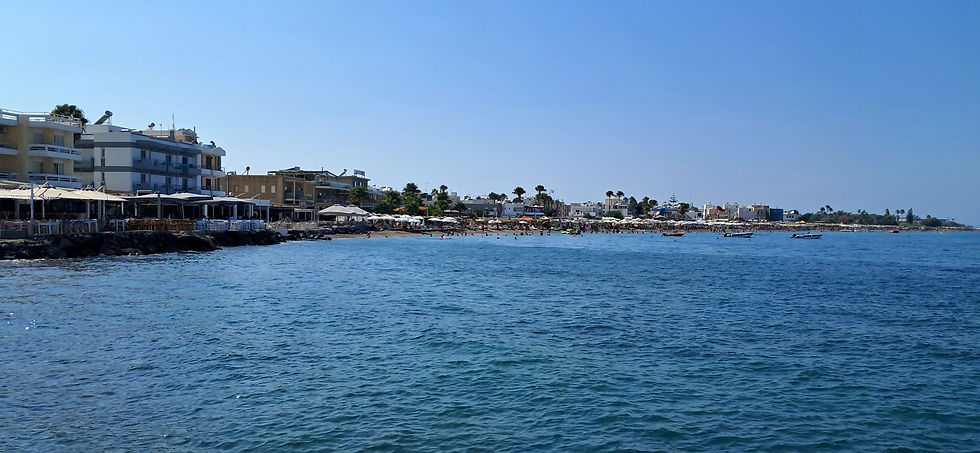Kos, Greece: Island of Hippocrates
- brightsunnymorning9
- Aug 24
- 2 min read
Since we spent our summer vacation in Bodrum, Turkey, in 2025, we couldn’t resist taking a trip to the Greek island of Kos. Kos is the third-largest island of the Dodecanese group, after Rhodes and Karpathos. The ferry ride takes only about 30 minutes and offers a unique opportunity to step into another country, instantly change the atmosphere, and experience a different culture—all in a single day. Ferries from Bodrum to Kos Town run daily during the season, from May to October. All you need is your passport and a good mood.

Ferry ride from Bodrum to Kos
Kos Town
Most of the main attractions are within walking distance of the port. Kos Town is beautifully laid out, with palm-lined streets, ancient ruins, and a relaxed Aegean atmosphere.

Streets of Kos

Streets of Kos

Streets of Kos
Its marina reflects the authentic island spirit, with colorful fishing boats and sailing vessels gently swaying in the water.

Kos marina

Kos marina

Kos marina
The Tree of Hippocrates
Kos is the birthplace of Hippocrates, the ancient Greek physician and founder of the Hippocratic medical school, celebrated worldwide as the “Father of Medicine.” In the town center stands the famous Tree of Hippocrates, believed to be more than 2,000 years old. According to legend, Hippocrates taught his students beneath its branches. Today, the tree is hollow and supported by a metal structure, yet it still holds deep symbolic meaning.

The Tree of Hippocrates
Nearby, in the same park, stands a statue dedicated to Hippocrates.

A statue dedicated to Hippocrates

A statue dedicated to Hippocrates -detail
Altar of Dionysus
In the heart of Kos Town lies an archaeological site dedicated to Dionysus, the god of wine and festivity. The remains of foundations and walls bear witness to the ancient temple and to the importance this deity once held in the lives of the island’s inhabitants.

Altar of Dionysus
Roman Odeon
The Roman Odeon in Kos is a small but remarkably well-preserved ancient theater dating back to the 2nd century AD. It was used for musical performances, poetry recitals, speeches, and smaller dramatic plays. With a capacity of about 750 spectators, it offered a more intimate setting compared to the larger amphitheaters of its time. It was discovered in 1929 during excavations led by the Italian archaeologist Laurenzi and was soon after reconstructed by an Italian archaeological team. Visitors today can admire the original marble seats, decorative details, and mosaics found beneath the stage, making the Odeon a cultural landmark that brings ancient Roman art and heritage to life.

Roman Odeon
Western Archaeological Zone
The Western Archaeological Zone of Kos Town is home to an impressive collection of ancient Roman ruins, including baths, mosaics, and early Christian basilicas.

Western Archaeological Zone
Lambi Beach
We spent a relaxing afternoon at Lambi Beach before returning to Bodrum. Just a 15-minute walk from the town center, the beach is well maintained, and sunbeds are free of charge if you order a drink or meal at one of the nearby restaurants.

Lambi Beach

Beach panorama
On our way back from the deck of the ferry, we watched tourist boats sailing in and out of Kos harbor, creating a picturesque scene to end the day.

Tourist boats

Tourist boats

Tourist boats



Comments